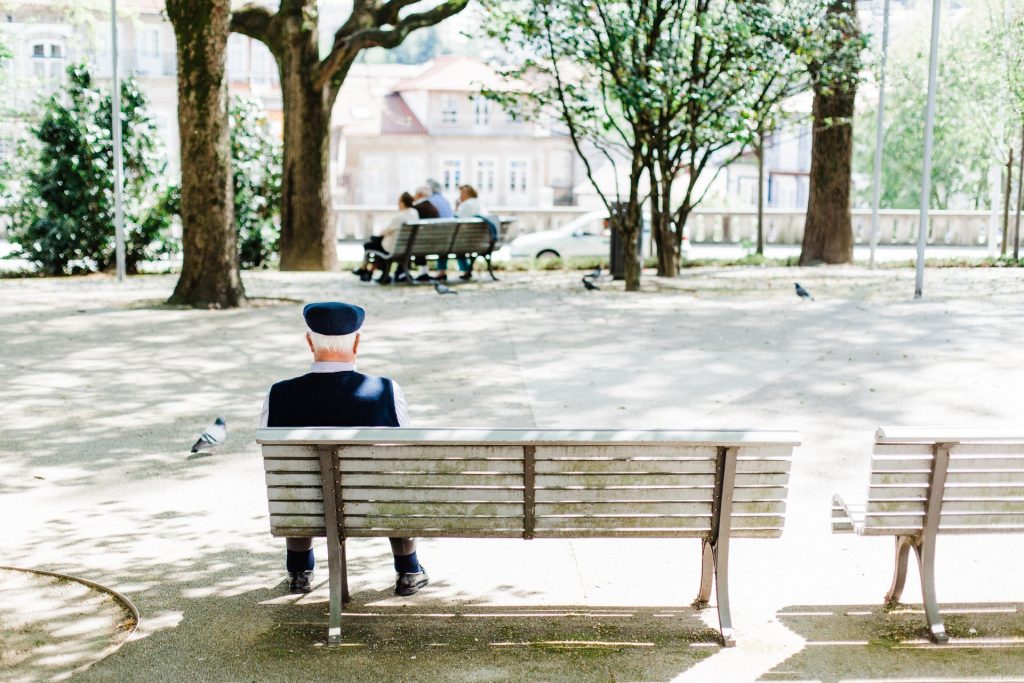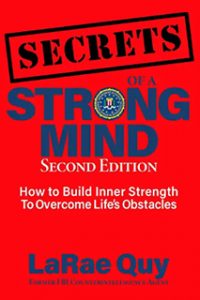Many of us know exactly what to do with the news reported in 2020 and we’re busy lining our bird cages with it so nature can take its course. We are slowly emerging from the Trump—Woke Progressives—Twitter trifecta that’s left us feeling depressed, anxious, and lonely.
Something is amiss these days, something primal and at the heart of being human. People are social animals—we’ve evolved to live in tribes and rely upon one another, both physically and emotionally as well.
The COVID pandemic brought health manuals the size of a Buick, sheltering-in-place restrictions, and prolonged periods of isolation. We’ve known for some time that being alone is a dangerous situation, but over the past few months, our loneliness has metastasized into a deadly epidemic.
Much of our meaning and purpose in life comes from relationships and our role in society. The human condition relies on connections in general, but it thrives on deep relationships.
Social disconnection is not a recent phenomenon, however. Cigna reported that chronic loneliness had become an epidemic by 2018.
Millions of people have been socially isolated for a variety of reasons—separated from society, few personal relationships, and little real communication with the outside world other than through social media. A survey in the UK revealed that in 2019 half a million people over the age of 60 spent every day alone.
People who experience social isolation can live alone, or suffer the loneliness of a crowd where they can’t connect with anyone. They may not have a job or have a job where they’re too busy for anything other than superficial relationships.
They may be single or have a partner who doesn’t share their deepest values.
People can live alone or feel alone wherever they live. They may lose touch with family and friends. They may never meet neighbors. They can stay shut in with their computer for years at a time.
Here are tips on how to overcome the harm from social isolation:
1. Join A Group
Research has found that group discussions are far more effective than one-on-one interactions when it comes to overcoming the harm of social isolation.
This is an important point because left on our own, many of us might connect with one person and call it good. Not so fast. Social isolation is defined as “cut off from others” which suggests that our solution is group-driven.
Group activities appear to be the most effective way to combat loneliness and isolation. Studies show that when people experience life in group situations, they find companionship and a sense of belonging.
In general, people tend to find group situations more comfortable and less threatening than one-on-one activities. Being in a group allows people to see what others are experiencing in the same situations and that others may have similar concerns and difficulties.
When the task is focused on a shared purpose, it’s an effective way for people to open up.
How To Make It Work For You: Find volunteer opportunities such as:
- Nursing home or senior citizen center
- Animal rescue and shelter
- Soup kitchen
- Read to kids at school
- Find a group with common hobbies or interests:
- Book club
- Cooking class
- Travel club
- Hiking group
- Church/spiritual activities
Unless, of course, you’re an introvert…
2. But, Introverts Can Find A Group, Too
Groups, and conversations in general, can be a nightmare experience for an introvert. Under normal circumstances, the introvert is most comfortable with meaningful one-on-one conversations. But social isolation makes it extremely hard to maintain that solitary best friend thing over the long haul.
Introverts will need to cast a wider web and here’s the thing—groups take care of our desire for quantity, but social skills are needed to develop the quality of relationships. Since introverts savor one-on-one type of conversations, they are good at developing deep connections.
We are not talking about social duds; we are talking about people who don’t feel the need for a hundred best friends.
No one knows better than an introvert that a crowd can be the loneliest place in the world if you can’t connect with someone on a deeper level.
How To Make It Work For You: Get comfortable with occasionally interrupting others when in a group so you get a chance to speak. Keep your eyes on a person who makes you feel safe and comfortable. Strike up a conversation with the person closest to you.
3. Tap Into The Power Of Social Connection
The better you understand how your brain works and how it affects both your mental and physical health, the better you’re prepared to counter the negative effects of social isolation which can lead to depression, anxiety, and stress.
A neuroscientist at UCLA has discovered that our brain is predisposed to be social in our spare moments. Matthew Lieberman states that the social nature of our brain is biologically based. Even in quiet moments, the brain seeks to see the world through a social lens.
Social connections can be a powerful way to make us more productive and, ultimately, happier. A part of the brain called the dorsomedial prefrontal cortex could be described as the Social Director of the brain. It’s activated when we dream and during other periods of rest. It’s how we process our recent experiences and update our understanding of the social world.
It should be no surprise that this is the part of the brain that becomes active when we look at Facebook, Instagram, or Twitter. It also explains why people who are lonely or feel socially isolated have spent an inordinate amount of time on social media in recent months. They are no longer able to physically interact with people so social media becomes a substitute.
Social Isolation affects other parts of the brain as well.
Researchers have found a correlation between the size of a person’s social network and the size of their amygdala. The amygdala is associated with processing our emotions. More recent evidence suggests that the amygdala is smaller in people who suffer from loneliness.
Neuroscientists are quick to say “use it or lose it” when it comes to rewiring the brain. As the amygdala withers from lack of use during times of social isolation and loneliness, so does our ability to understand, empathize, or express emotions.
How To Make It Work For You: Find new ways to stay connected with your social network. Make an extra effort to speak to people, make Skype or Zoom calls, and consider texting to satisfy the Social Director in our brain.
Express emotions with another person or even a pet. Don’t let the amygdala atrophy from lack of use. Movies and books with both sad and happy endings will trigger important emotions for you to experience. When you are with other people, ask questions about their well-being. Renew efforts to reach out to friends, colleagues, and co-workers.
The very fact that you feel lonely and isolated is your body’s way of telling you to get off your butt, get into the world, and build more meaningful social ties.
4. Age Matters
People tend to suffer from loneliness and social isolation at certain times in life—under 30 and over 60.
There have been many studies on the plight of older people. The Wall Street Journal reports that one of every 11 Baby Boomers is growing old without family around them. Boomers have the highest rate of suicide of any age group and an escalating drug problem.
Many studies in recent years have concluded that loneliness and social isolation also affects children and young adults. Rates of major depression and suicide have spiked. Researchers like to point to social media and technology as the primary culprits, but there’s little solid science behind that assertion.
According to new numbers by the Center For Disease Control and Prevention, 25% of young people between the ages of 18-24 have seriously considered suicide.
Parents, you cannot prepare your child for the real world by insisting upon emotional safety above all else. Your darling progeny will be confronted by a shit storm at some point in life—they will lose something important, they will be treated unfairly, and they will be forced to confess they were at fault. In short, you must teach them how to become adults who are accountable for their actions and can be resilient in the face of adversity.
How To Make Work For You:
Encourage older people you know to check out the University Of The Third Age (U3A), a universal movement to educate and stimulate people who are retired and in the third age of life. Invite them to consider how they can use the knowledge and experience they’ve learned over a lifetime to give back to their communities.
Prepare the child in your life for the road ahead of them, not for the road to be made easier for your child.
5. Break The Link Between Social Isolation and Poor Health
Psychologist Dr. Chris Fagundes discovered that lonelier people feel worse when they are sick than less lonely people. The increased misery is not just a matter of perception. Loneliness actually does make people sicker. Study after study suggests loneliness is a health hazard, raising a person’s risk of a wide range of illnesses from cardiovascular disease and cancer to depression and dementia.
A wealth of research shows how a sense of being cared for and loved is crucial to our well-being, something denied to those who suffer loneliness and social isolation. Social interaction is a fundamental part of being human, like breathing. We need oxygen, but we need healthy, thriving relationships just as much.
How To Make It Work For You: When you can’t meet in person, use video conferencing when possible because there is budding evidence that video calls reduce social isolation more than regular phone calls. Strike up a correspondence with a former acquaintance. Write an old-fashioned letter to someone you haven’t seen for a period of time.
© 2021 LaRae Quy. All rights reserved.
You can follow me on Twitter, Facebook, Instagram, AND LinkedIn
Are you mentally tough? Here is my FREE Mental Toughness Assessment
Check out my new online training program at www.SecretsOfAStrongMind.com
Get my new book, “Secrets of a Strong Mind (second edition): How To Build Inner Strength To Overcome Life’s Obstacles”
Author of “Mental Toughness for Women Leaders: 52 Tips To Recognize and Utilize Your Greatest Strengths”






Excellent article LaRae about such a poignant topic today. I have watched my mother in an assisted living community become so anxious about everything. I zoom with her to connect more deeply and she lights up with our calls. I think we especially need to take care of our elderly who have less processing power and feel disconnected from the real world.
Social isolation can feel suffocating during all stages of life and now, more than ever, it’s rampant. I appreciate the reminder that there are things we can choose to do to break through our isolation and make connections for better mental health and wellbeing. Sometimes, we don’t know where to start and that becomes an excuse for pulling away even more.
Alli